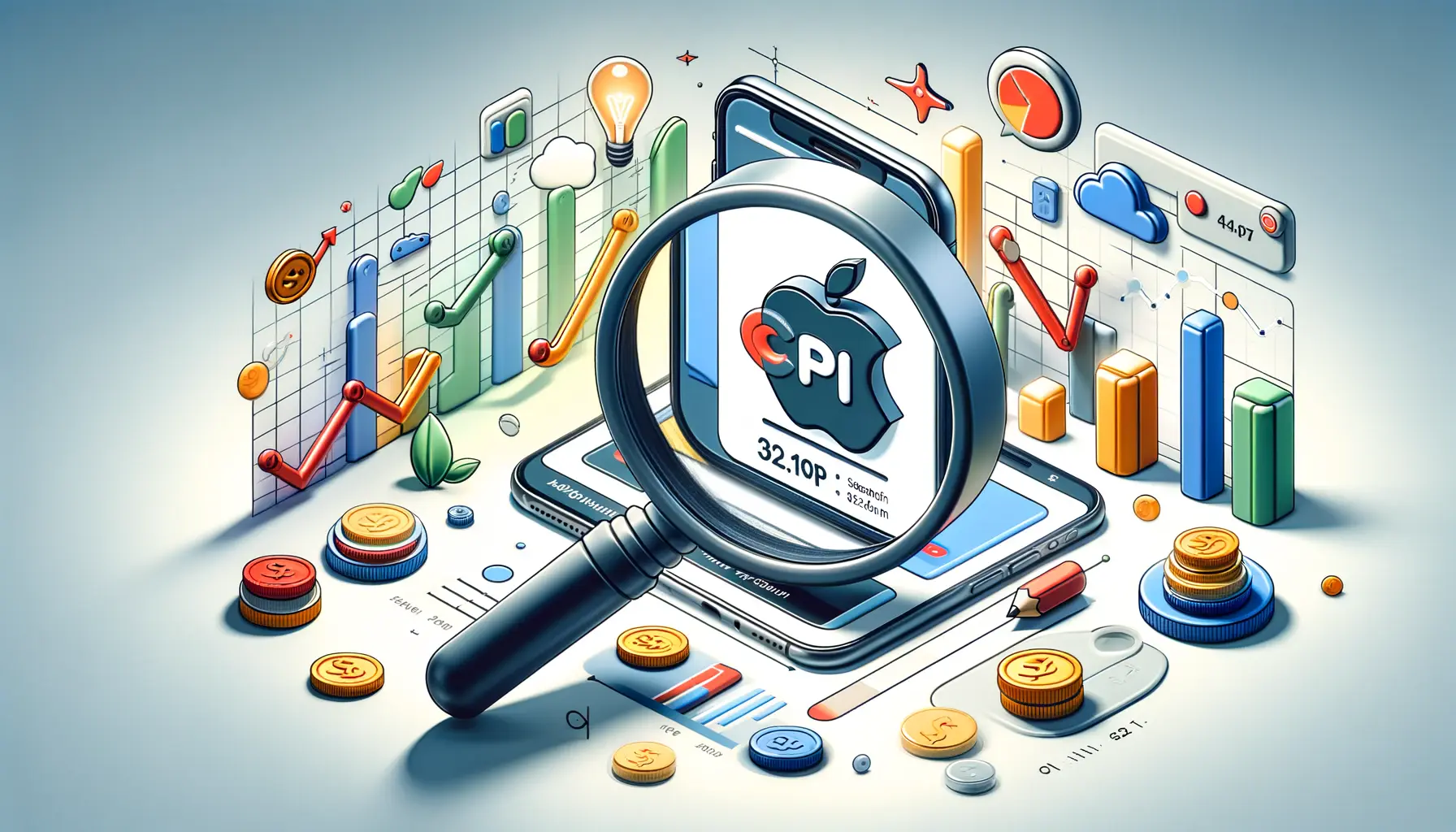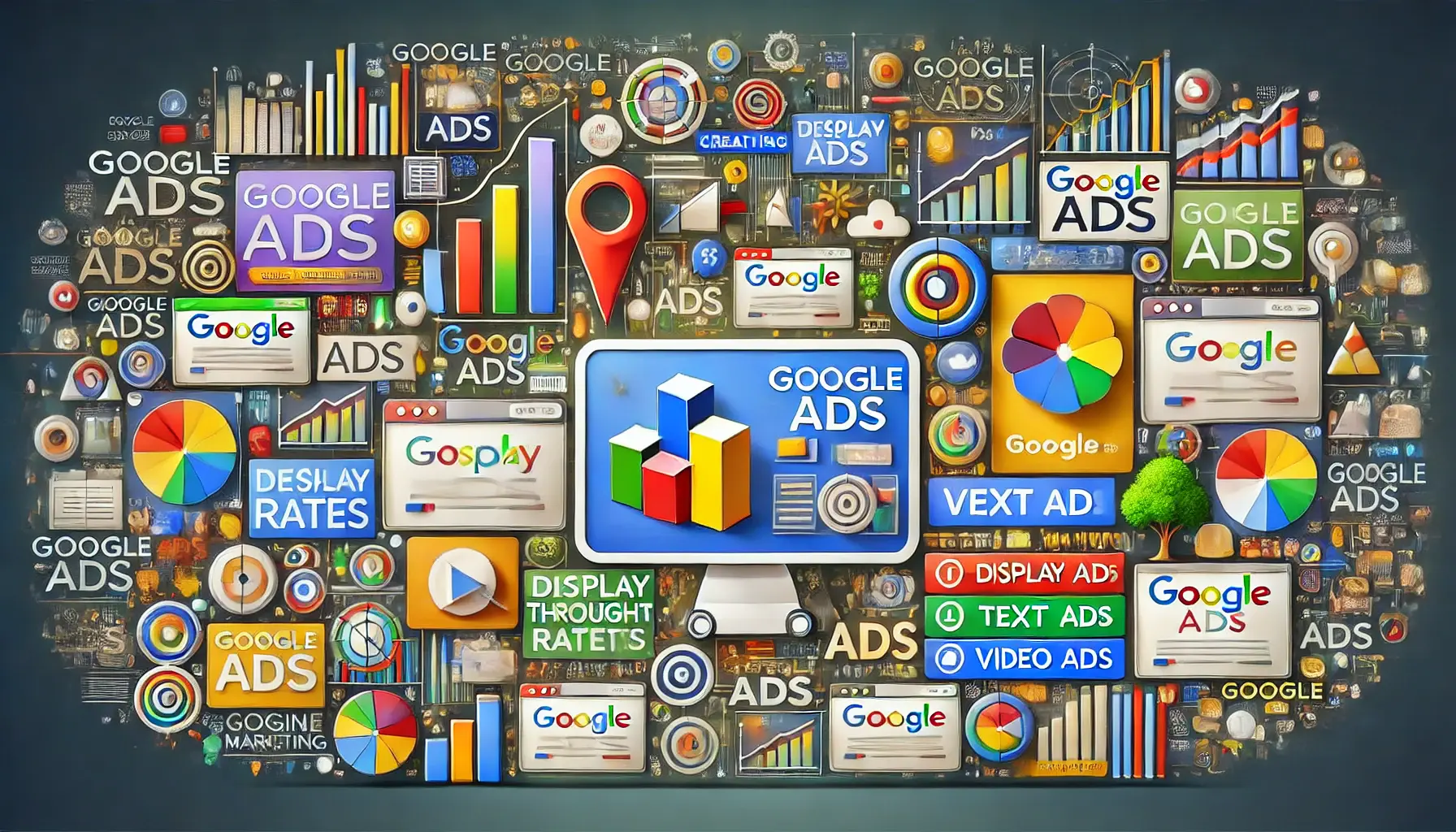The digital advertising landscape is undergoing a transformative phase, where the integration of Artificial Intelligence (AI) into ad variations optimization is reshaping how businesses reach their target audiences.
This shift towards AI-driven advertising strategies is particularly evident in the realm of Apple Search Ads Ad Variation, a category that stands at the intersection of technology and marketing prowess.
As businesses strive to capture the attention of potential customers in a highly competitive digital environment, the role of AI in crafting, testing, and refining ad variations has become paramount.
This article delves into the intricacies of leveraging AI for ad variations optimization, highlighting its impact, strategies, and the future of digital advertising in this innovative domain.
The main keyword, “AI for Ad Variations,” signifies the core of our exploration, underscoring the crucial integration of AI technologies in the creation and optimization of ad variations.
By harnessing the power of AI, advertisers can automate and enhance the process of ad creation, targeting, and analysis, leading to more effective and efficient advertising campaigns.
This capability is especially relevant in the context of Apple Search Ads Ad Variation, where the precision and relevance of ad content can significantly influence the success of advertising efforts.
Through this article, we aim to provide valuable insights into how AI can be utilized to optimize ad variations, thereby improving the overall effectiveness and ROI of digital advertising campaigns.
- Understanding AI in Advertising
- Strategies for Implementing AI in Ad Variations
- Case Studies: Success with AI-Driven Ad Variations
- Challenges and Solutions in AI-Driven Advertising
- Measuring the Impact of AI on Ad Performance
- Future Trends in AI-Driven Ad Variations
- Optimizing Your Strategy with AI-Driven Insights
- Embracing the Future of Advertising with AI
- FAQs on Leveraging AI for Ad Variations Optimization
Understanding AI in Advertising
The advent of AI in the advertising world has revolutionized the way marketers approach ad creation and optimization.
AI for Ad Variations employs sophisticated algorithms and machine learning techniques to analyze vast amounts of data, predict user behavior, and automate the creation of personalized ad content.
This not only streamlines the ad development process but also ensures that the ads are highly relevant and engaging to the target audience.
One of the fundamental benefits of incorporating AI into advertising strategies is its ability to process and analyze data at an unprecedented scale.
This enables advertisers to uncover deep insights into consumer preferences, behaviors, and trends, which can be leveraged to tailor ad variations more effectively.
By doing so, businesses can enhance the performance of their Apple Search Ads campaigns, achieving higher engagement rates and conversions.
AI’s Role in Ad Personalization
Personalization stands at the core of AI’s impact on advertising.
AI algorithms can sift through data to identify unique user characteristics and preferences, allowing for the creation of ad variations that speak directly to the individual’s interests and needs.
This level of personalization not only improves user engagement but also significantly boosts the chances of ad conversion.
In the context of Apple Search Ads Ad Variation, AI-driven personalization means that each ad variation is not just a different version of the ad but a targeted attempt to resonate with a specific segment of the audience.
This approach ensures that the ads are not only seen but are also meaningful and compelling to those who view them, thereby maximizing the impact of advertising efforts.
AI-driven personalization is key to enhancing ad relevance and engagement, leading to better advertising outcomes.

Strategies for Implementing AI in Ad Variations
Successfully integrating AI into ad variations involves a multi-faceted approach, where understanding the audience, leveraging data, and continuous optimization are key components.
By adopting these strategies, businesses can significantly improve the efficiency and effectiveness of their ad campaigns within the Apple Search Ads ecosystem.
Implementing AI for ad variations optimization is not just about deploying technology but also about strategically utilizing it to meet specific advertising goals.
Below are some proven strategies that can help advertisers make the most out of AI capabilities:
Identifying Target Audience Segments
The first step in leveraging AI for ad variations is to accurately identify and segment your target audience.
This involves analyzing demographic, psychographic, and behavioral data to create detailed profiles of potential customers.
AI tools can automate this process, providing insights that help tailor ad content to match the preferences and behaviors of different audience segments.
- Demographic Analysis: Understanding the age, gender, location, and other demographic factors of your audience.
- Behavioral Insights: Analyzing past interactions, purchase history, and engagement patterns.
- Psychographic Profiling: Identifying interests, values, and lifestyle characteristics that influence buying decisions.
Utilizing Data for Predictive Analysis
AI excels in predictive analysis, which allows advertisers to forecast future consumer behaviors and trends based on historical data.
By employing machine learning algorithms, businesses can predict which ad variations are likely to perform best with specific audience segments.
This predictive capability enables advertisers to proactively adjust their strategies, ensuring that their ads remain relevant and impactful.
- Collect and analyze historical ad performance data.
- Identify patterns and trends that indicate consumer preferences.
- Use predictive models to determine the most effective ad variations.
Continuous Optimization Through Machine Learning
One of the greatest advantages of using AI in ad variations is the ability to continuously optimize ads based on real-time data.
Machine learning algorithms can automatically test different ad variations, analyze performance metrics, and implement changes to improve ad effectiveness.
This iterative process ensures that ad campaigns are always aligned with the latest consumer trends and behaviors.
- A/B Testing: Running controlled experiments to compare different ad variations.
- Performance Monitoring: Tracking key metrics such as click-through rates, conversion rates, and ROI.
- Adaptation and Refinement: Adjusting ad content, targeting, and bidding strategies based on analytical insights.
Incorporating AI into ad variations offers a dynamic approach to digital advertising, enabling businesses to stay ahead in a rapidly evolving market.

Case Studies: Success with AI-Driven Ad Variations
Exploring real-world applications of AI in optimizing ad variations offers valuable insights into its effectiveness and potential.
Numerous businesses have harnessed AI technologies to revolutionize their digital advertising strategies, achieving remarkable results in the process.
Below are case studies that highlight the transformative impact of AI-driven ad variations in various sectors.
Enhancing E-commerce Conversion Rates
An e-commerce platform utilized AI to analyze customer data and create highly personalized ad variations for their Apple Search Ads campaign.
By targeting users based on their browsing history, purchase behavior, and product preferences, the platform saw a significant increase in conversion rates.
AI algorithms enabled the dynamic creation of ad content, optimizing it in real-time based on user engagement and feedback.
- Outcome: 30% increase in conversion rates.
- Strategy: Personalized ad variations based on user behavior and preferences.
- Technology: Machine learning algorithms for real-time ad optimization.
Driving App Downloads for Mobile Games
A mobile gaming company leveraged AI to optimize its ad variations for Apple Search Ads, aiming to increase app downloads.
By analyzing gaming preferences and engagement levels, the AI system created targeted ad variations that resonated with different gamer segments.
The approach not only improved click-through rates but also boosted app downloads significantly.
- Identify gamer segments based on preferences and behavior.
- Deploy targeted ad variations for each segment.
- Analyze performance data to continuously refine ad content.
The mobile gaming company’s success underscores the importance of leveraging AI for targeted and effective ad variations, demonstrating the power of technology in enhancing digital advertising outcomes.
Optimizing Travel Ads for Higher Engagement
A travel agency used AI to optimize its ad variations, focusing on personalizing offers and deals based on user search history and preferences.
By employing predictive analytics, the agency was able to present the most relevant travel packages to users, leading to a noticeable uptick in engagement and bookings.
The AI-driven strategy allowed for the dynamic adjustment of ad content, ensuring maximum relevance and appeal to potential travelers.
- Outcome: 25% increase in booking rates.
- Strategy: Dynamic personalization of travel offers in ad variations.
- Technology: Predictive analytics for targeted ad creation.
These case studies illustrate the transformative potential of AI in optimizing ad variations, driving significant improvements in engagement, conversion rates, and overall campaign performance.

Challenges and Solutions in AI-Driven Advertising
While the integration of AI into advertising offers numerous benefits, it also presents unique challenges that businesses must navigate.
Understanding these hurdles and identifying effective solutions is crucial for leveraging AI to optimize ad variations successfully.
This section delves into common challenges encountered in AI-driven advertising and proposes practical solutions to overcome them.
Data Privacy and Security Concerns
One of the primary challenges in leveraging AI for advertising is ensuring data privacy and security.
With stringent regulations like GDPR and CCPA, businesses must navigate the complexities of using consumer data responsibly while optimizing ad variations.
- Solution: Implement robust data protection measures, adhere to privacy laws, and ensure transparency with users about how their data is used.
- Outcome: Building trust with your audience while maintaining compliance with data privacy regulations.
Overcoming Data Silos
Data silos within organizations can hinder the effective use of AI in ad variation optimization.
When data is fragmented across different departments, it becomes challenging to gain a holistic view of consumer behavior and preferences.
- Develop an integrated data management strategy to consolidate data sources.
- Employ AI tools that can analyze data across silos, providing comprehensive insights.
- Facilitate cross-departmental collaboration to ensure data is shared and utilized effectively.
Addressing data silos not only enhances the efficiency of AI-driven advertising but also improves the accuracy of targeting and personalization efforts.
Keeping Pace with AI Evolution
The rapid pace of AI development poses a challenge for businesses striving to stay current with the latest technologies.
Advertisers must continuously update their knowledge and tools to leverage AI effectively for ad variations.
- Solution: Invest in ongoing training for marketing teams and establish partnerships with AI technology providers.
- Outcome: Ensuring your advertising strategies remain cutting-edge and fully leverage the capabilities of AI.
Facing and overcoming these challenges is essential for businesses to fully harness the power of AI in optimizing ad variations, driving more effective and efficient advertising campaigns.

Measuring the Impact of AI on Ad Performance
Evaluating the effectiveness of AI-driven ad variations is crucial for understanding their impact on campaign performance.
Accurate measurement and analysis enable advertisers to quantify the benefits of AI integration and make informed decisions to refine their advertising strategies.
This section explores key metrics and tools for assessing the success of AI-optimized ad variations.
Key Performance Indicators (KPIs)
To measure the impact of AI on ad performance, it’s important to focus on specific KPIs that reflect the objectives of your advertising campaigns.
These metrics provide insights into how well AI-optimized ad variations are performing in terms of engagement, conversion, and ROI.
- Click-Through Rate (CTR): Measures the effectiveness of ad variations in attracting clicks from the target audience.
- Conversion Rate: Indicates the percentage of users who take a desired action after clicking on an ad, such as making a purchase or downloading an app.
- Return on Ad Spend (ROAS): Calculates the revenue generated from advertising relative to the cost of the ads, highlighting the financial return on investment.
Analytics and Reporting Tools
Leveraging advanced analytics and reporting tools is essential for tracking the performance of AI-optimized ad variations.
These tools offer detailed insights into campaign metrics, enabling advertisers to analyze the effectiveness of their AI strategies and make data-driven adjustments.
- Select analytics platforms that integrate with your advertising channels, providing real-time data on ad performance.
- Utilize AI-powered reporting tools that can automatically identify trends, anomalies, and opportunities for optimization.
- Regularly review campaign reports to understand the impact of AI on ad variations and to identify areas for improvement.
By systematically measuring the impact of AI on ad performance, businesses can optimize their advertising strategies, enhance the relevance of their ad variations, and achieve better outcomes from their digital marketing efforts.
Effective measurement and continuous optimization are key to unlocking the full potential of AI in ad variation optimization, leading to more successful advertising campaigns.

Future Trends in AI-Driven Ad Variations
The landscape of AI-driven ad variations is constantly evolving, with new technologies and approaches emerging to enhance the effectiveness of digital advertising.
Staying ahead of these trends is crucial for marketers aiming to leverage AI for competitive advantage.
This section highlights future directions in AI-driven ad variations and their potential impact on advertising strategies.
Increased Use of Natural Language Processing (NLP)
Natural Language Processing (NLP) technology is set to play a significant role in the future of AI-driven ad variations.
By understanding and generating human language, NLP enables the creation of more engaging and contextually relevant ad content.
This will allow for even more personalized and conversational ad variations, improving user engagement and conversion rates.
- Application: Automated generation of ad copy that resonates with the target audience’s language and preferences.
- Impact: Enhanced user experience and increased effectiveness of ad campaigns through better communication.
Advancements in Predictive Analytics
As AI technologies advance, predictive analytics will become even more sophisticated, offering deeper insights into consumer behavior and future trends.
This will enable advertisers to anticipate market changes and consumer needs, creating ad variations that are not only reactive but also proactive.
- Utilize advanced AI models to forecast consumer trends and preferences.
- Create ad variations tailored to future consumer behaviors, ensuring relevancy and timeliness.
The advancements in predictive analytics will empower advertisers to stay one step ahead, optimizing their ad variations for future success.
Integration of Augmented Reality (AR) in Ad Variations
Augmented Reality (AR) offers exciting possibilities for AI-driven ad variations, providing immersive and interactive advertising experiences.
By integrating AR with AI, advertisers can create highly engaging ad variations that allow users to interact with products or services in a virtual environment, enhancing the impact of their campaigns.
- Application: AR-enabled ad variations that offer virtual try-ons, product demos, or interactive experiences.
- Impact: Increased engagement and conversion rates by providing a more interactive and memorable ad experience.
The future of AI-driven ad variations is marked by the integration of emerging technologies like NLP, advanced predictive analytics, and AR, offering new avenues for creating highly personalized and engaging advertising experiences.

Optimizing Your Strategy with AI-Driven Insights
The integration of Artificial Intelligence (AI) into ad variations not only enhances the effectiveness of individual ads but also provides valuable insights that can inform broader marketing strategies.
By analyzing data on a granular level, AI uncovers patterns and preferences that might not be visible to the human eye.
This section explores how businesses can leverage AI-driven insights to optimize their overall advertising and marketing strategies.
Personalizing Customer Journeys
AI-driven insights can significantly improve the personalization of customer journeys.
By understanding the unique behaviors and preferences of different audience segments, businesses can tailor their marketing messages and touchpoints to offer a more customized experience.
This personalization extends beyond ad variations, influencing email marketing, content creation, and even product development.
- Action: Use AI to segment audiences based on detailed behavioral data.
- Benefit: Deliver highly personalized marketing messages across all channels, increasing engagement and loyalty.
Enhancing Content Strategy
Insights derived from AI-driven ad variations can also inform a company’s content strategy.
By identifying which messages resonate most with audiences, businesses can produce content that aligns with their target market’s interests and needs.
This approach ensures that all content, from blog posts to social media updates, contributes to a cohesive and effective marketing strategy.
- Analyze performance data from ad variations to identify successful themes and topics.
- Create content that mirrors the insights gained, ensuring it addresses the audience’s interests.
Refining Product Offerings
Finally, AI-driven insights from ad variations can provide valuable feedback on product offerings.
Understanding which features or benefits are highlighted in the most successful ads can guide product development and refinement.
This ensures that businesses are not only marketing effectively but also offering products that meet the evolving needs of their customers.
- Action: Use AI to analyze which product features are most appealing to consumers.
- Benefit: Adapt and develop products that align with consumer preferences, enhancing market fit and demand.
Leveraging AI-driven insights goes beyond optimizing ad variations; it empowers businesses to refine their entire marketing strategy, ensuring that every aspect is aligned with consumer preferences and behaviors for maximum impact.

Embracing the Future of Advertising with AI
As we have navigated through the intricate world of leveraging AI for ad variations optimization, it’s clear that this technology is not just a trend but a cornerstone of future advertising strategies.
The integration of AI within Apple Search Ads Ad Variation and beyond represents a significant leap towards more personalized, efficient, and effective advertising.
By harnessing the power of AI, businesses can unlock unprecedented levels of engagement and conversion, propelling their marketing efforts into a new era of success.
Key Takeaways
Throughout this exploration, several key insights have emerged:
- AI-driven personalization is transforming ad content, making it more relevant and engaging for the target audience.
- Continuous optimization through AI ensures that ad variations remain effective over time, adapting to evolving consumer behaviors.
- The challenges associated with AI integration, such as data privacy and keeping pace with technology, are manageable with strategic approaches.
- Measuring the impact of AI on ad performance is crucial for understanding its effectiveness and refining advertising strategies accordingly.
- The future of AI in advertising is bright, with advancements in NLP, predictive analytics, and AR set to offer even more dynamic and immersive ad experiences.
Strategizing for Success
To truly leverage AI for Ad Variations, businesses must adopt a forward-thinking approach, embracing the potential of AI while navigating its challenges with agility and insight.
This entails:
- Staying informed about advancements in AI and advertising technologies.
- Investing in AI integration and optimization across all facets of advertising and marketing.
- Fostering a culture of innovation that embraces experimentation and continuous learning.
In conclusion, the journey of integrating AI into ad variations is an ongoing process of discovery, innovation, and adaptation.
As AI technologies evolve, so too will the strategies and opportunities for advertisers.
By remaining vigilant, adaptable, and committed to leveraging AI, businesses can ensure that their advertising efforts remain at the forefront of the digital age, driving success in an increasingly competitive landscape.
If you're seeking expertise in Apple Search Ads campaigns, visit our service page for professional management!
FAQs on Leveraging AI for Ad Variations Optimization
Explore common questions about enhancing your advertising strategies with AI.
AI for Ad Variations Optimization uses machine learning to create, test, and refine ads based on data-driven insights, enhancing targeting and performance.
AI analyzes user data to identify patterns, enabling highly personalized ad variations that resonate with specific audience segments for better engagement.
Yes, through predictive analytics, AI forecasts ad performance based on historical data, helping advertisers make informed decisions on ad variations.
Natural Language Processing (NLP) enhances ad copy relevance and engagement by generating language that mimics human conversation and preferences.
AI-driven ads must comply with privacy regulations by anonymizing and securely processing data, ensuring user consent and transparency in data usage.
AI optimizes ad spend by allocating budget to high-performing ad variations and channels, ensuring maximum ROI through efficient use of resources.
AI continuously tests and analyzes ad variations, automatically adjusting strategies in real-time based on performance metrics for optimal results.
Future trends include the integration of augmented reality in ads for immersive experiences and advanced predictive analytics for more accurate targeting.













